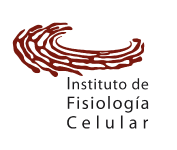IreA controls endoplasmic reticulum stress-induced autophagy and survival through homeostasis recovery
Domínguez-Martín, E., Ongay-Larios, L., Kawasaki, L., Vincent, O., Coello, G., Coria, R., & Escalante, R. (2018). IreA controls endoplasmic reticulum stress-induced autophagy and survival through homeostasis recovery. Molecular and Cellular Biology, MCB.00054?18. doi:10.1128/mcb.00054-18
The Unfolded Protein Response (UPR) is an adaptive pathway that restores cellular homeostasis after endoplasmic reticulum (ER) stress. The ER-resident kinase/ribonuclease Ire1 is the only UPR sensor conserved during evolution. Autophagy, a lysosomal degradative pathway, also contributes to the recovery of cell homeostasis after ER-stress but the interplay between these two pathways is still poorly understood. We describe the ER-stress response and characterize its single Ire1 orthologue, IreA. We found that tunicamycin (TN) triggers a gene-expression reprogramming that increases the protein folding capacity of the ER and alleviates ER protein load. Further, IreA is required for cell-survival after TN-induced ER-stress and is responsible for nearly 40% of the transcriptional changes induced by TN. The response of cells to ER-stress involves the combined activation of an IreA-dependent gene expression program and the autophagy pathway. These two pathways are independently activated in response to ER-stress but, interestingly, autophagy requires IreA at a later stage for proper autophagosome formation. We propose that unresolved ER-stress in cells lacking IreA causes structural alterations of the ER, leading to a late-stage blockade of autophagy clearance. This unexpected functional link may critically affect eukaryotic cell survival under ER-stress.




